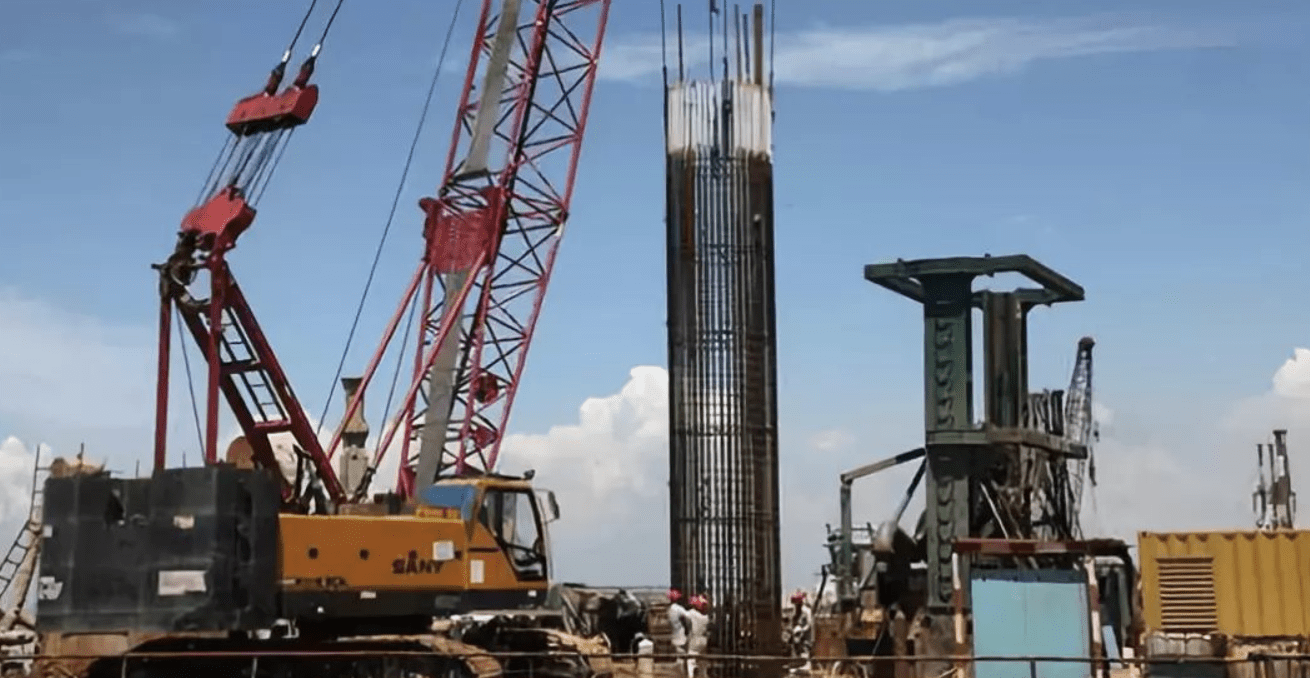Introduction
Bored cast-in-place piles are hidden structures embedded in strata, serving as bridge foundations that transfer loads through friction between the pile’s outer wall and surrounding soil or via the bearing capacity of the pile tip. Currently, bored cast-in-place piles are widely used in highway bridges and other engineering fields due to their strong adaptability, moderate cost, and simple construction.
However, as cast-in-place piles are concealed works, their construction quality is influenced by numerous factors, such as geological conditions, drilling techniques, wall protection, rebar cage uplift, concrete mixing, and pouring. Any negligence or improper measures may lead to quality accidents, ranging from minor issues like hole collapse and necking to severe problems such as broken piles, which not only delay the project but also negatively impact overall construction quality.
Therefore, strict control over each construction phase is essential. All influencing factors must be carefully considered, and construction quality must be rigorously monitored to minimize accidents and mitigate losses, ensuring smooth project progress. This article focuses on the causes and prevention measures of broken piles in bored cast-in-place piles.
1. Causes and Analysis of Broken Piles
1.1 Common Types of Broken Piles
During bored cast-in-place pile construction, broken piles may occur due to operational errors, equipment failure, or hydrogeological conditions. Generally, broken piles can be classified into four types:
-
Non-Setting Concrete Between Pile and Bedrock
-
Cause: The distance between the conduit and the hole bottom is too large, allowing concrete to be diluted by slurry, increasing the water-cement ratio, and preventing proper setting.
-
-
Non-Setting Concrete in the Middle Section
-
Cause: Groundwater infiltration or poor conduit sealing leads to slurry intrusion, increasing the water-cement ratio.
-
-
Sediment Layer Separating Concrete Sections
-
Cause: Excessive conduit lifting during pouring exposes concrete to slurry, or power outages/material shortages cause sediment accumulation.
-
-
Void Formation in Pile Body
-
Cause: Direct pouring from the hole opening (instead of the “top-up” method) leads to concrete segregation, resulting in loose or hollow sections.
-
1.2 Factors Contributing to Broken Piles
Broken piles occur when slurry infiltrates part or all of the concrete section, disrupting structural integrity. The primary causes include:
-
Short cement setting time
-
Oversized aggregate or large pebbles in sand
-
Poor concrete workability and fluidity
-
Incomplete hole cleaning
-
Improper conduit depth (too deep or too shallow)
-
Water leakage in the conduit
-
Mechanical failures or poor labor/material management, leading to prolonged pouring
1.3 Root Causes of Broken Piles
To prevent broken piles, potential risks must be eliminated early, and countermeasures should be prepared. Key causes include:
-
Incorrect Concrete Surface Measurement
-
Misjudging slurry-mixed collapsed soil as concrete leads to conduit over-lifting, creating interlayers.
-
Solution: Use standardized depth measurement tools and verify readings to avoid errors.
-
-
Excessive Conduit Depth and Prolonged Pouring
-
Increased friction between concrete and conduit due to deep embedding or outdated flange-connected conduits, may cause rupture during lifting.
-
-
Conduit Blockage
-
Inconsistent slump due to poor mix control results in either segregation (blocking the conduit) or premature setting (increasing resistance).
-
Solution: Strictly control concrete mix ratios and minimize pouring time.
-
-
Hole Collapse
-
Weak geology, lack of supervision, or inexperienced workers may cause severe collapses or sand influx, leading to mud-sand-type broken piles.
-
-
Unexpected Disruptions
-
Conduit leaks, mechanical failures, power outages, or sudden water level changes can interrupt pouring.
-
Solution: Thorough pre-pouring preparations are critical.
-
2. Prevention Measures
-
Thorough Hole Cleaning
-
Use flushing fluid to remove sediment, and measure the hole diameter accurately to calculate the required concrete volume.
-
-
Adequate Initial Pouring Volume
-
Ensure the first batch buries the conduit by at least 0.8m, using cement-sand mix for the initial 1–2 buckets.
-
-
Proper Conduit Specifications
-
Use conduits ≥200mm in diameter with smooth interiors and sealed joints. Maintain a 0.5m gap between the conduit and the hole bottom.
-
-
Optimal Concrete Mix
-
Maintain slump at 16–20cm. Test new cement types/sources before use.
-
-
Groundwater Control
-
Seal active groundwater with casings or cement before pouring. Use the “top-up” method.
-
-
Material and Utility Preparedness
-
Stock sufficient materials and avoid water/power interruptions.
-
-
Conduit Depth Management
-
Keep conduit embedded 2–3m deep, monitoring via depth curves. Abnormal curves indicate potential breaks.
-
3. Remedial Methods for Broken Piles
3.1 Secondary Drilling
-
Shallow Breaks (<10m): Extract the rebar cage, re-drill, and repour.
-
Deep Breaks (>10m, hardened concrete): Use a smaller drill to remove the cage, then re-drill to design diameter.
3.2 Excavation Method (Open-Cut)
-
For breaks <5m deep in stable soil, excavate, remove contaminated concrete, and recast after surface preparation.
3.3 Pile Position Adjustment
-
For minor projects, adjust pile locations (with design approval) if the broken pile is the first one.
4. Conclusion
Bored cast-in-place piles require meticulous execution across drilling, slurry preparation, cage installation, and pouring. Quality assurance hinges on rigorous inspections and skilled personnel. By prioritizing prevention and diligent construction, pile integrity can be ensured, safeguarding project timelines and costs.



